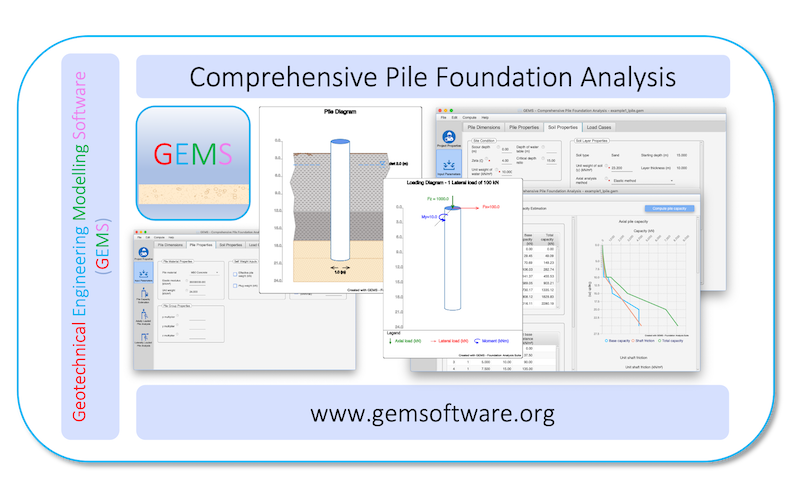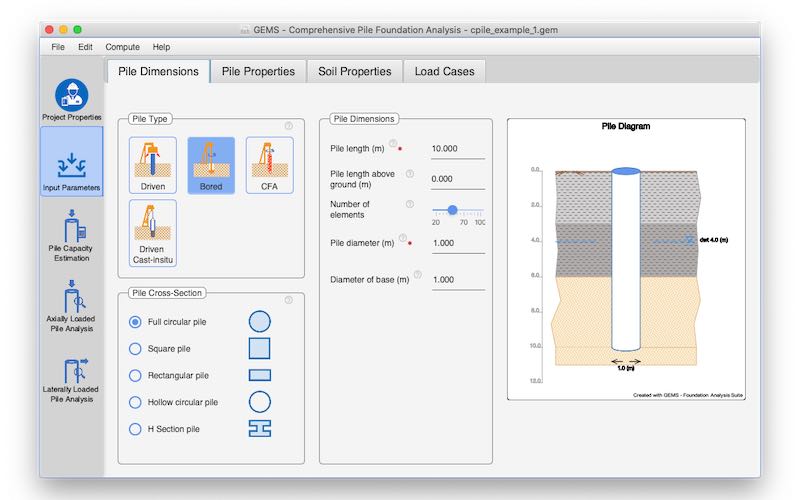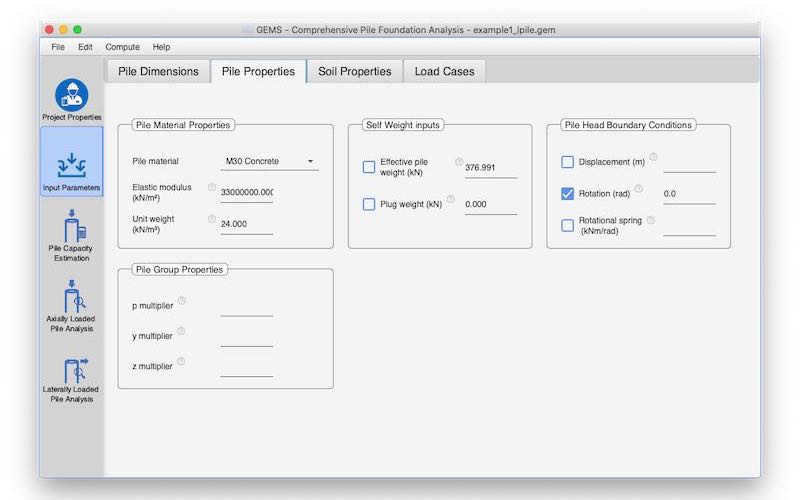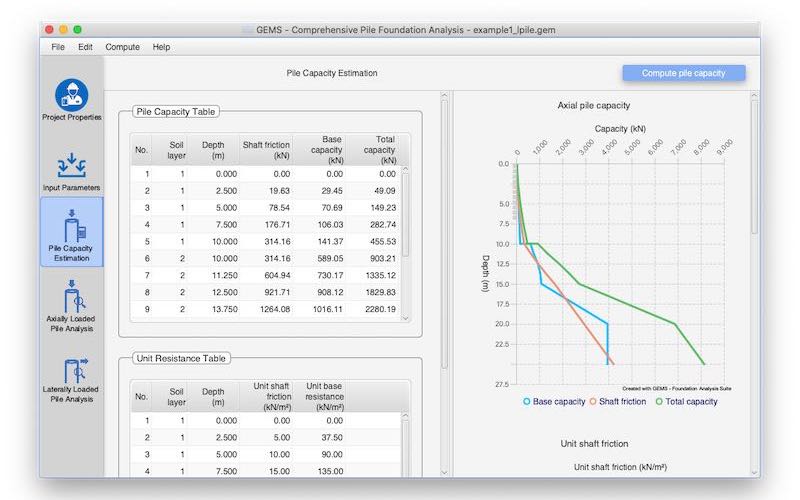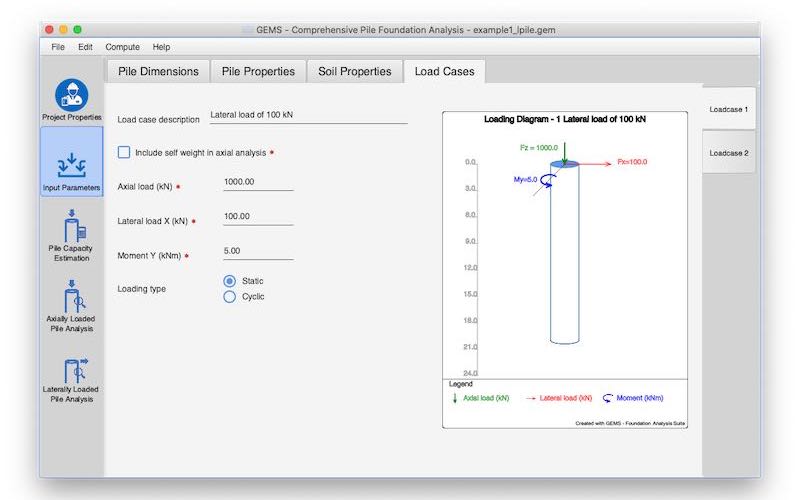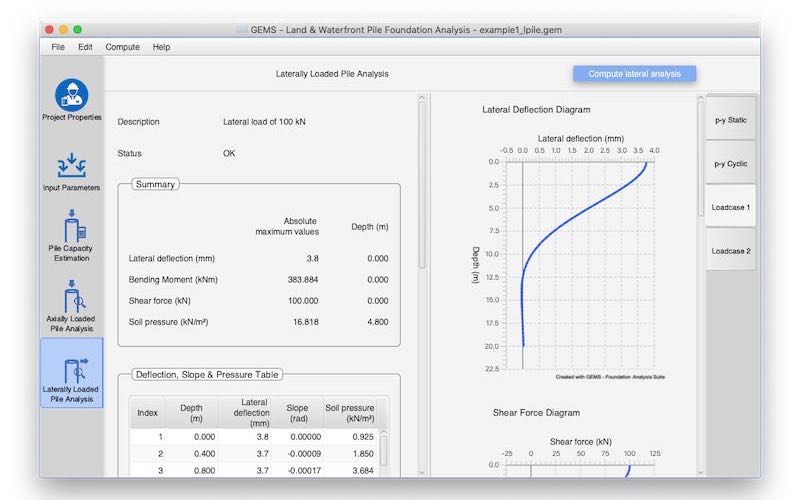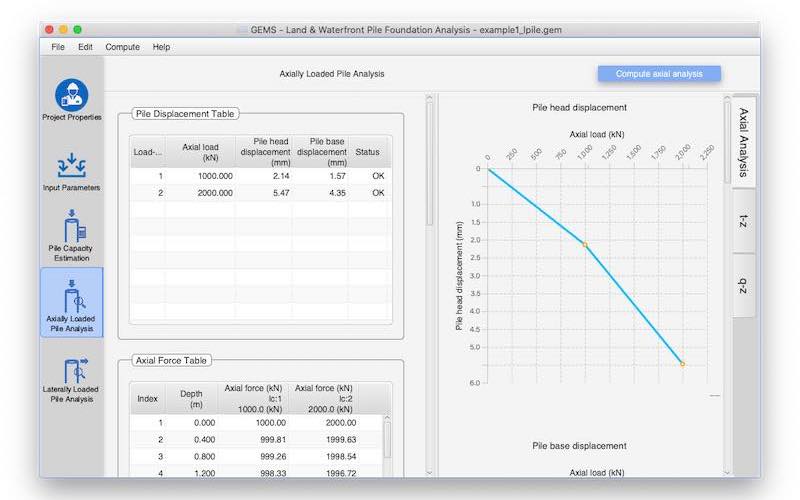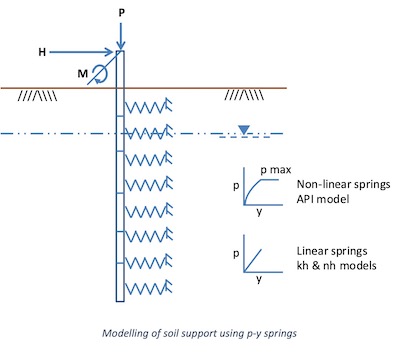 Axially Loaded Pile Analysis
Axially Loaded Pile Analysis
This module has two independent sub modules:
(a) Axial pile deformation analysis
Pile is modelled as an elastic structural member having
the cross section of the pile and the elastic properties of
the pile material. The soil support providing the shaft
friction is modelled by a set of side springs based on t-z
curves. The tip resistance provided by the pile base the base
is modelled by a spring based on Q-z curve.
The software supports both ‘Elastic Bi-linear’ and
‘Non-Linear’ approaches for modelling and any one of them can
be selected for analysis.
In the ‘Non-Linear’ approach, for the soil layer, based on the
tmax and qmax values calculated ,
non-linear t-z curves (interface shear stress- vertical pile
movement at that point) and q-z curve (bearing stress and toe
displacement) are developed based on API-2011 guidelines. In
the case of rock layers, using the tmax and qmax values, t-z
and q-z relationships are modelled by a bilinear elastic –
plastic curve based on the elastic modulus and Poisson ratio
of the rock layer.
In the ‘Elastic Bi-linear’ approach, for the soil layer, t-z
and q-z relationships are modelled by bilinear elastic –
plastic curves based on the elastic modulus, Poisson ratio ,tmax
and qmax for the layer.
The axial pile analysis follows a non-linear finite
element model using the axial rigidity of the pile and the
nonlinear soil support based on the t-z curves and q-z curve.
. The analysis uses an Iterative approach to achieve
convergence.
The analysis provides displacement of the pile head
under a given load on the pile head, variation of axial load
along the pile length, and the load carried by the pile base.
Different loads applied on the pile head and the corresponding
head displacements provide the load displacement curve.
(b) Generation of t-z and Q-z curves
Development of a set of t-z curves along the shaft
length and Q-z curve at the pile base for compressive loading.
Multiple t-z curves are generated for each soil layer. The
curves can be based on ‘API-2000 RP’, ‘API-2011 RP GEO’ or
‘Elastic Method’ for sand and clay layers. API based methods,
also account for reduction in post peak adhesion in clay
layers through a factor R.
